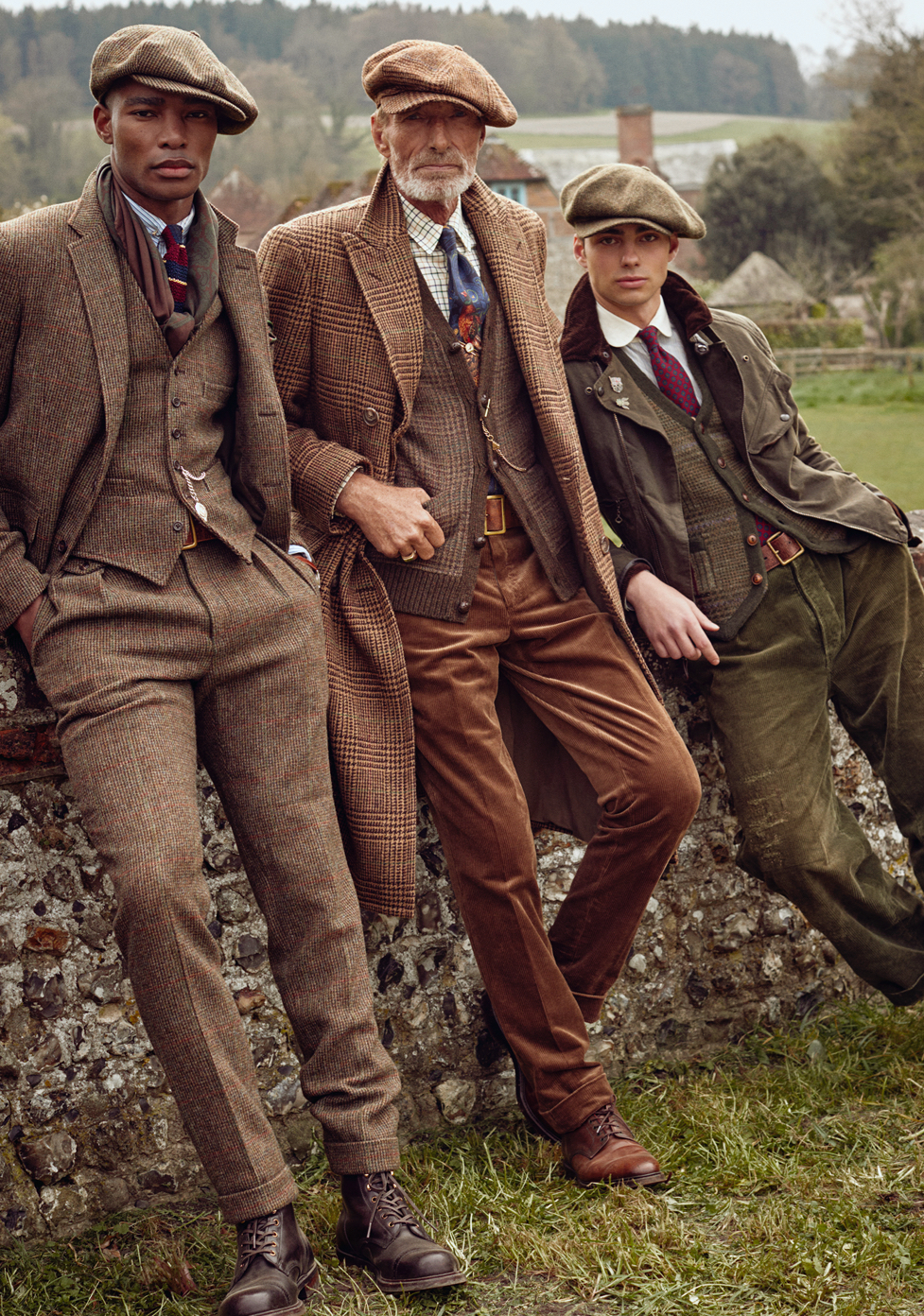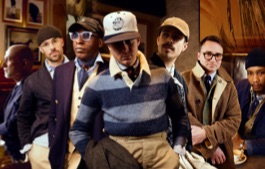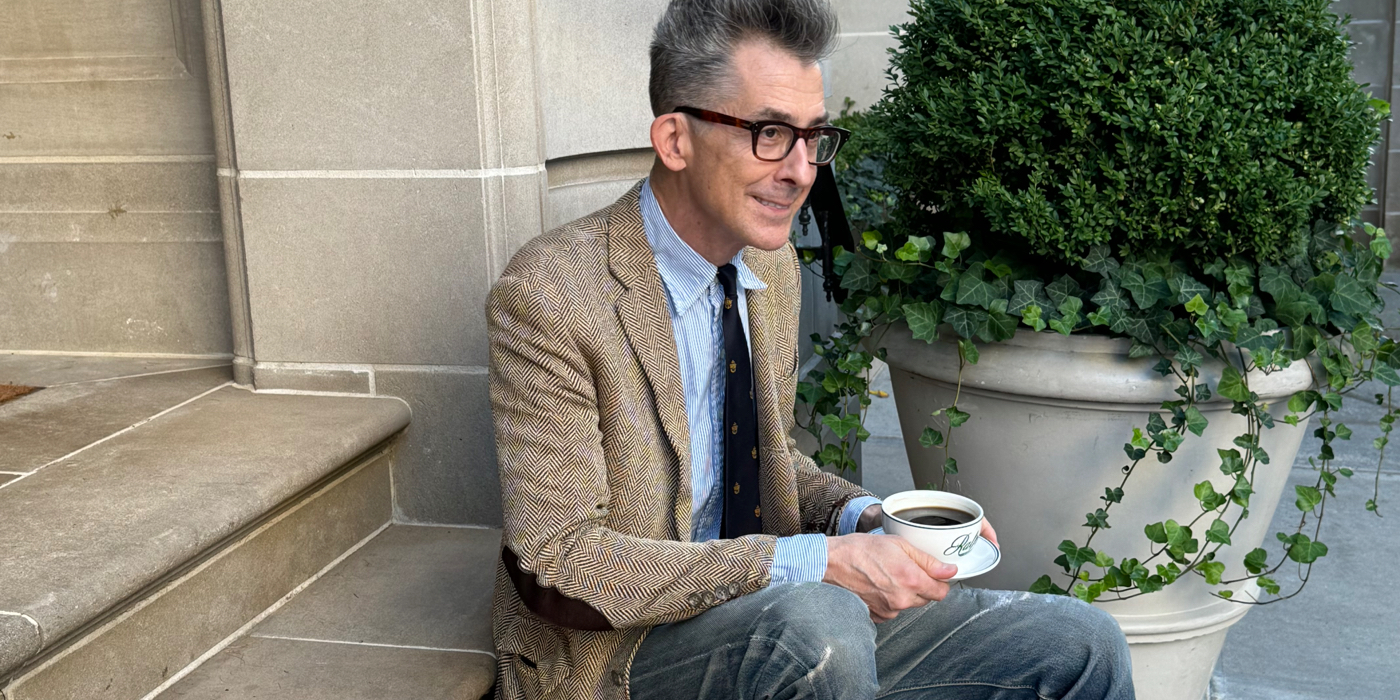
Rebel in a Repp Tie
The former executive editor of both GQ and Esquire writes about the tie that still goes anywhereWhat’s that great line from Groucho Marx? “I wouldn’t want to belong to any club that would have me as a member”?
Brilliant thinking for a (not so) successful social life, for sure.
But when it comes to style, I like to twist old Groucho’s bit of wisdom into some sartorial advice: You may not be a member of a club but that should never stop you from wearing a club tie - because club and repp ties are secret weapons of a well-dressed man’s style. If you don’t have one in your kit, it’s like not owning a well-worn white oxford button-down; both are fundamental pieces that expand your wardrobe.
Most guys look at club and repp ties and think they’re just standard issue for wearing with a blue blazer. Something stuffy and formal. Maybe something they last wore when they were in high school. But look again and you’ll realize that when worn the right way, they inject an unexpected shot of individuality into any outfit.
Look, I grew up in the shadow of O’Hare Airport, about as far removed as you can get from the storied worlds in which club and repp ties were born - centuries-old British boarding schools, vine-encrusted universities, and ancient military regiments that tramped across many a misty moor to defend crown and country. But from the time I was in high school and first saw Ralph’s take on this classic of neckwear, I was all in. Yes, I was a sucker for the faraway worlds the ties conjured. I liked their legacy and origins and what they evoked. But what I appreciated most was how the tie is so secretly rebellious. I learned that from an editor I worked with back in Chicago at a small start-up. He had covered a war or two as a reporter, played drums in a jazz trio, and liked to yell at the boss. He also wore club ties with his Savile Row chalk-stripe suits. It was a look I took to heart.
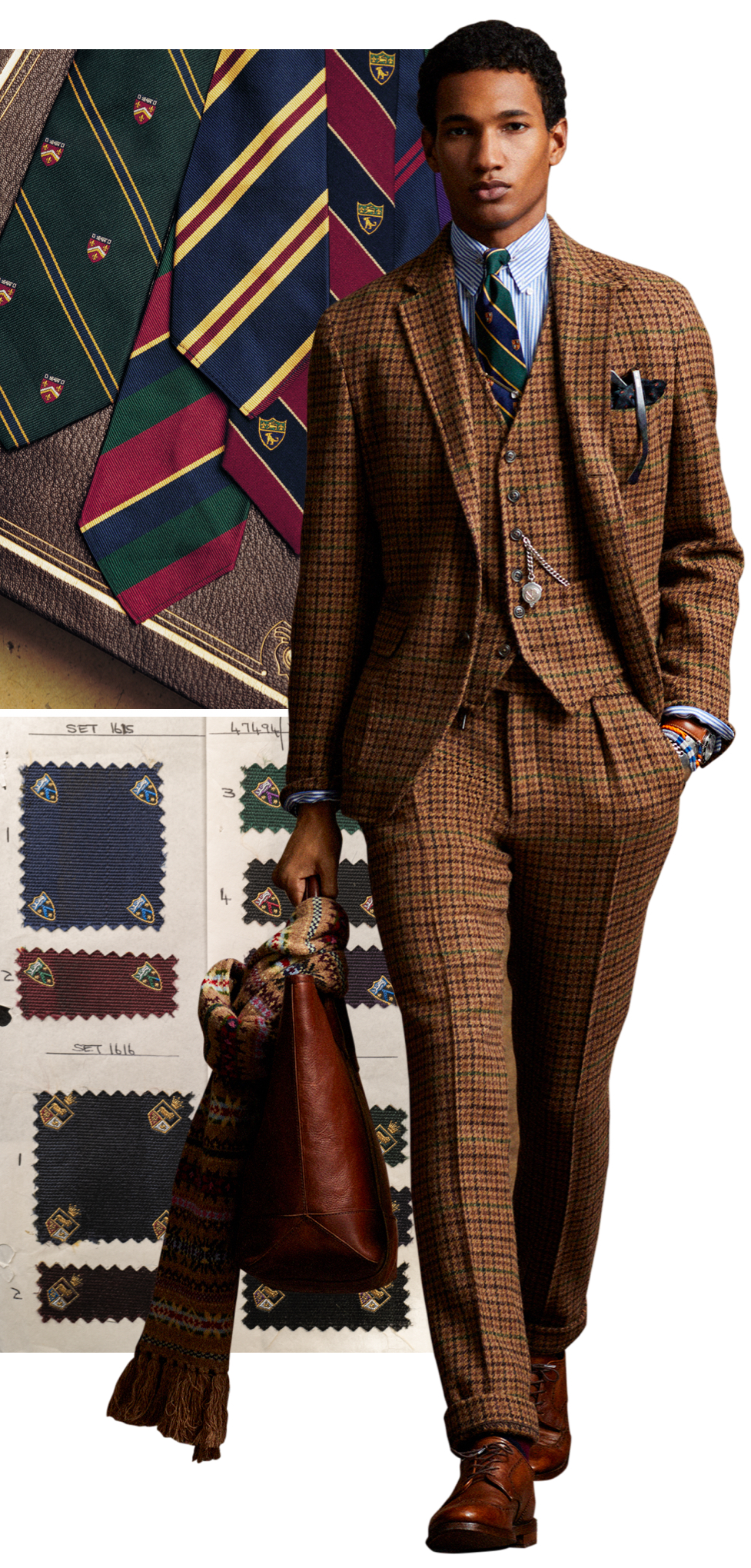
The author having a cup of Ralph’s Coffee; a selection of striped and heraldic repp ties; a look from this season’s Polo Originals; and a swatch card from a mill in England, where Polo repp ties have been woven for many years
As I’ve learned in the years since, rebelliousness is actually a central part of the tie’s heritage. Legend has it that the first club tie came about in the mid-19th century, when some rowdies on the rowing team from Oxford’s Exeter College slipped the striped bands off their hats and tied them around their necks. Thus was born the repp tie (named after the technique weavers use to give the silk a surface detail of spaced, narrow ribs). A repp had diagonal stripes, a club small coats of arms. Both versions of the repp would cross the Atlantic to become a staple of Ivy League and prep style in America and when they did, instead of a repp’s diagonal stripe being angled left to right, it was reversed.
The designs of the repp and the club each have strengths you can lean into, but the key to integrating them into your style game today is to embrace their refined-but-rebellious roots. When paired with something like a grey flannel suit, the stripes of the repp not only give you a perfect pop of colour, but they also loosen up the perceived formality of the grey flannel. And that looseness is something to build on. You can then add in some suede chukka boots or maybe even mess up your hair a bit.
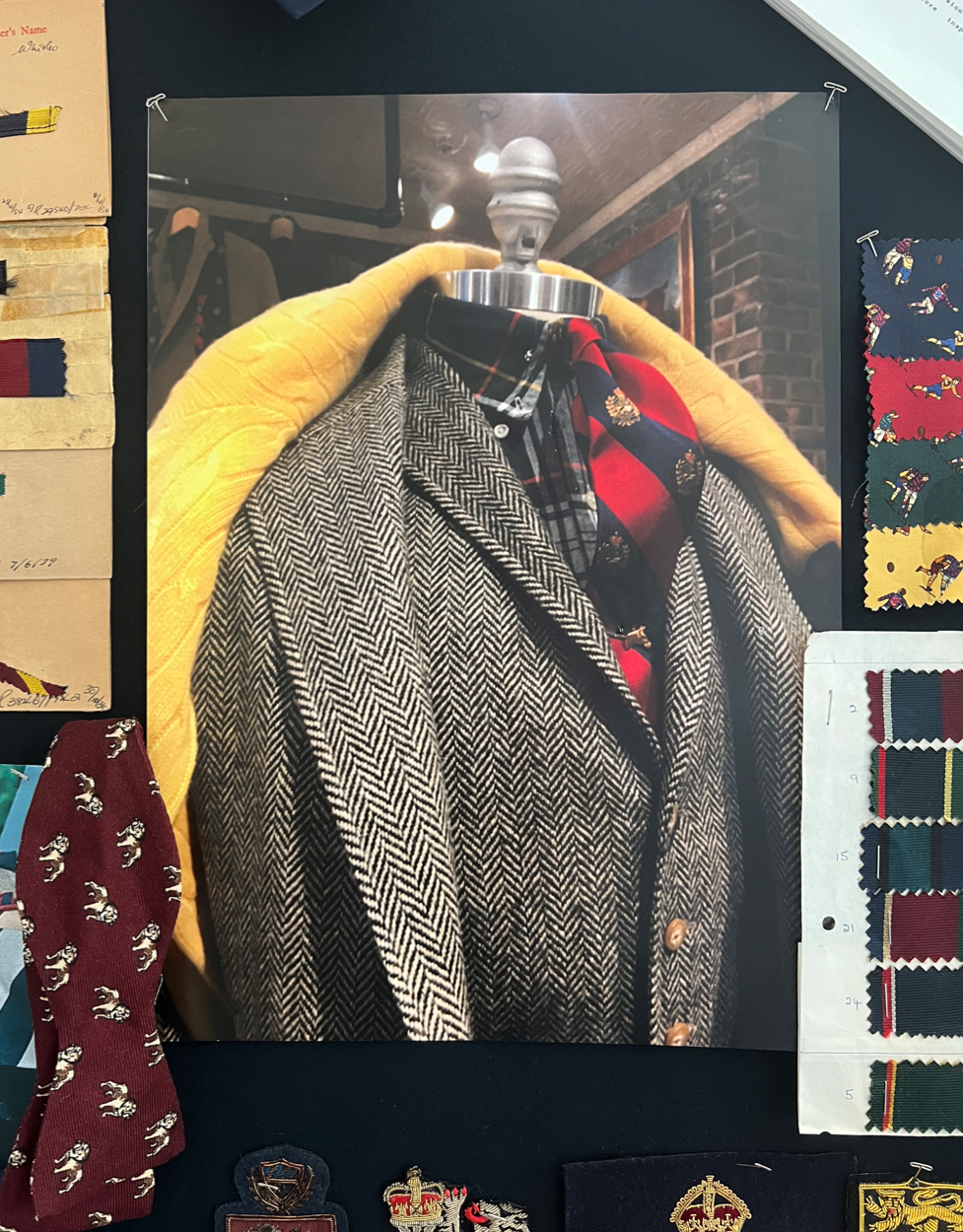
As part of the design process, Ralph has mood boards created that include swatch samples, photographs, props, and archival research
Club ties kind of work the opposite way. I think of them as perfect for pairing with something like a denim jacket or a beat-up black leather jacket, adding what turns out to be a cool shot of formality. Club ties are almost like a thinking man’s bandana. But no matter how you wear them, it’s important to remember: Don’t get too fussy in how you cinch them up, like you’re trying to pass a dress inspection from your commanding officer. Let them wave in the breeze with the same attitude those Oxford blokes first did, knotted with just a single dimple.
I’ve always been a tie guy, and I consider the three clubs I have in my collection from Ralph Lauren treasured pieces of my wardrobe. I’ve had them for decades now, from my earliest days as an editor at GQ, on to Esquire and beyond. They’re so indispensable that I pack them whenever and wherever I travel, as I know they will carry me through any situation that might arise since they let me dress up or dress down any look. I’ve worn them with flannel pinstripes on business dinners to fancy joints in Paris, and I’ve worn them with a beat-up chambray shirt while having dinner with my wife on the Amalfi Coast. They never cease to get noticed in the right way. Plus, there’s something great knowing that a tie originally created to signal to others you were part of a small group is now the surest way to signal to everyone you are an individual.
MORE FROM THE POLO GAZETTE
BOSS TWEED
Exploding the size of iconic tweed patterns to turn three-piece suits, Polo coats, and blazers into statement pieces worth notice
By Griffin Gonzales
